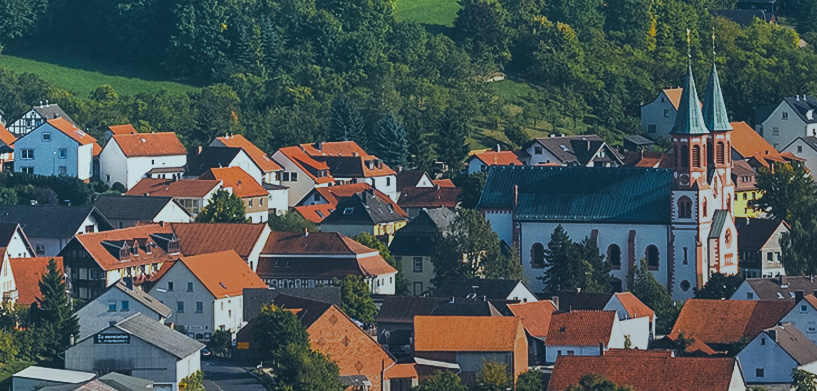Located approximately 100 kilometers (about 62 miles) northeast of Frankfurt, Hofbieber, Germany, is a smaller city – only about 6,300 residents – with huge climate ambitions.
In fact, the municipality is actively striving to achieve climate neutrality by 2030.
To monitor its progress toward this ambitious goal, Hofbieber is creating an urban digital twin powered by Hexagon technology.
What is an urban digital twin, exactly?
The term “digital twin” is well known, but an urban digital twin is more than a simple 3D city model. It pulls together several existing, mature technologies that, when leveraged comprehensively, can provide unprecedented insights and actionable information.
A true urban digital twin consists of multiple layers:
- Digital city: Digital replica serves as the foundation by providing data necessary to create a virtual model of the physical city
- Connected city: Data from IoT sensors allows for real-time monitoring, analysis and control with interconnected devices that communicate with each other
- Intelligent city: AI and simulations added to that data works at the core of the urban digital twin with a platform that can connect to and visualize all data from the digital city and the connected city
An urban digital twin can be an invaluable tool to help cities meet sustainability goals, which is exactly what Hofbieber hopes to achieve.
Hofbieber and Hexagon
The municipality, a longtime customer, is now working with Hexagon to create an urban digital twin that will monitor its progress toward reaching carbon neutrality by 2030.
Ordinarily, larger cities use urban digital twins for environmental modeling and planning, but Hofbieber, covering an area of only 87 square kilometers (about 34 square miles) is setting an example for small towns wanting to tackle climate change.
It is now tracking its CO2 emissions and can compare its progress to that of other municipalities. In the future, its urban digital twin can also be used to simulate flooding risks, heat islands, wind pathways, traffic and more.
Hofbieber’s urban digital twin could also produce benefits beyond its achievement of sustainability goals. Higher property values, lower insurance rates and increased economic development and tourism are natural byproducts of the advanced environmental and urban management made possible by urban digital twins.
Hofbieber’s efforts also align with the environmental aspirations of the country as a whole.
Germany’s environmental aspirations
Overall, Germany aspires to become greenhouse-gas neutral by 2045 and is aiming to reduce emissions by 65% by 2030. To achieve this, the German government adopted a comprehensive Climate Action Programme in late 2023 as it sets out measures for all large economic sectors as well as cross-cutting action. These include energy, transportation, industrial, agriculture and waste management.
The country is also phasing out the use of coal to generate electric power. Today, nearly 50% of its energy comes from renewable sources, such as wind and solar power.
Larger German cities and other cities across Europe are embracing urban digital twins to enhance environmental efforts.
Urban digital twins in larger cities
Stuttgart, Germany, is using Hexagon’s digital twin platform to visualize and analyze data from IoT sensors across the city to promote sustainability and improve quality of life for its 600,000 residents.
The platform will also be used to monitor water quality, flood levels and parking space occupancy – enabling the city to optimize operations and make informed decisions for its future.
In addition, Klagenfurt, Austria, is home to more than 100,000 residents and seven times as many trees. Although an important weapon in the fight against climate, trees can cause damage to infrastructure when branches or whole trees fall.
Klagenfurt created a digital twin using Hexagon technology to develop a model that automatically detects where trees are located and which trees could potentially cause damage to buildings, power lines, roads or rail networks.
The digital twin also provides initial information to assess if photovoltaic and solar thermal systems can be installed on building surfaces. It even calculates the effects of shadows cast by each individual tree, in summer and in winter, and provides a calculation of the solar energy potential of each Klagenfurt home and business.
Ensuring a sustainable future
Caring for our planet is one of the most pressing issues that humanity faces today. Thankfully, cities of all sizes are now embracing urban digital twins to provide global city leaders with critical and actionable insights for developing the right sustainability programs.
















